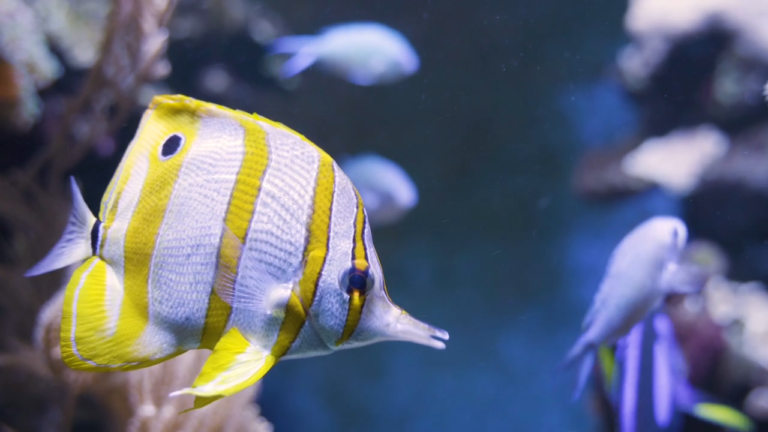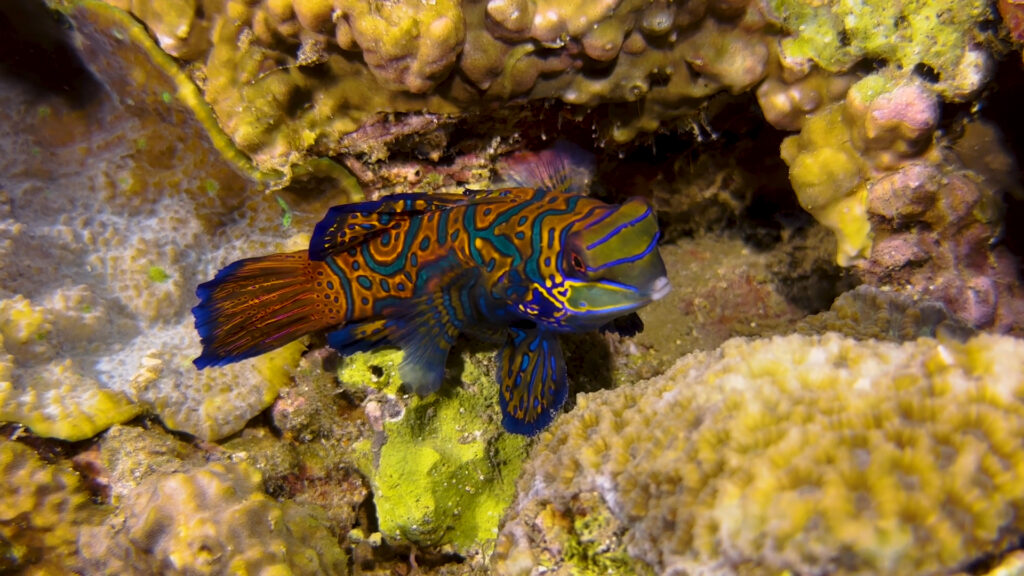The 7 Best Reasons for Color on Fish
Watch Video Below
When a diver or snorkeler gets under the water in a coral reef almost the first thing that they see are the brightly colored fish swimming about.
However, their gorgeous colors are not for the amusement of humans. Each species of fish has a different purpose for their colors.
Most coral reef fish have very good eyesight and have a special vision for color. Not only can they see the colors that humans see but around 30% can see ultraviolet light.
Some deep dwelling fish have an extra sensitivity to distinguishing many small variations of blue because the deeper in the ocean most other colors such as red and yellow are filtered out and the only color left is blue.
The main purposes are: Camouflage, Countershading, Warning, Advertising, Eye Spots, Disruptive, and Mimicry.
Camouflage
The fishes that use camouflage or concealment blend into their background. Usually, they are not very good swimmers and need to hide within their environment in order to survive.
Often, a fish will change color as it ages. When it is young it may need more protection and will blend into its environment. As it ages its color changes to other more vibrant colors. Even, females may be a different color than males. Some flatfish, such as flounder, can change colors as they swim they swim into different environments.

Countershading
This coloration is like the morpho butterfly. The top of the fish is one color to conceal the fish from predators hunting from the top and another color on the underside to conceal it from the ground predators.
Sharks are an example of this type of coloration.They are dark from the top and light underneath.

Warning
These fish are colored brightly to bring attention to certain parts of their bodies. The brightly designed mandarinfish is poorly adapted for swimming. Its beautiful greens, blues and oranges warn its prey that it had a mucus layer that makes the mandarinfish unpalatable.
This is similar to the poison arrow frogs in the rainforests that are beautifully colored and poisonous. This beauty is a warning to its predators.

Advertising
Bright colors are used to attract other fish for a variety of reasons.
Cleaner wrasse use advertising by their bright colors to attract fish to their cleaning stations. Larger fish never harm the cleaners because they help them by cleaning off parasites.
Advertising is often used to attract a mate. Many mature males are very colorful in order to attract a mate in the way birds attract their mates. A good example of this is the parrotfish.
The beautiful parrotfish that snorkelers notice first is the male due to its bright colors. The female is often more camouflaged in its muted browns and oranges. The bright colors signal that the mature male is available to spread sperm in the courting ritual.

Eye Spots
Some fish have numerous spots that look like many possible eyes. This makes it difficult for a predator to figure out the size and orientation of the prey.
Butterflyfish have a variety of eyespots on various parts of their bodies to confuse predators.A common use of this is an eye spot near the tail. A predator needs to eat a fish head first because of the scales.
If a predator tries to eat a fish tail first because of an eye spot near the tail, it has a good chance of escaping.

Disruptive
Disruptive coloration is usually an irregular pattern of stripes and designs that confuses the predator.
This design makes it difficult to tell the shape and size of the fish and protects the most vulnerable organs in the body.
Another common method is a dark stripe across the eye to mask the pupil. The predator is looking for the eye of its prey in order to orient how it wants to catch and eat it. Examples of this are Angelfish, and some types of wrasse.

Mimicry
There are thought to be around 60 fish species using mimicry for protection in the coral reefs. This is when one species of harmless fish resembles another species that is very dangerous.
Examples are: a Red Sea blenny and a dangerous fang blenny. Some cleaner mimicry goes on when a fang blenny mimics a cleaner wrasse. The blenny will bite off pieces of fins instead of cleaning off parasites.
Some fish take on colors and behaviors of schooling fish to join them in their schools to protect themselves by safety in numbers.

